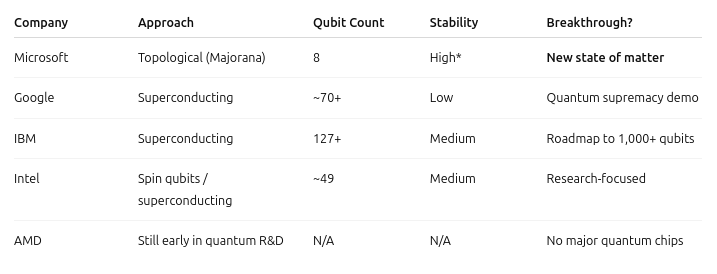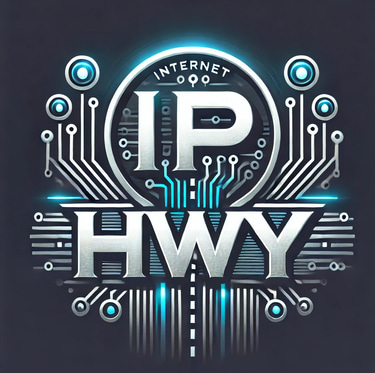Did Microsoft’s Quantum Bet Pay Off?
Jim Leone
6/24/20252 min read
My Research and Deep Dive into the Breakthrough That Could Leapfrog Intel, IBM, and the Rest
For over two decades, Microsoft has quietly placed one of the boldest bets in quantum computing. While rivals like Google, IBM, Intel, and AMD raced to increase qubit counts and reduce error rates, Microsoft pursued a radically different dream: topological qubits, a more stable, more scalable path to quantum computing, but one with no guarantee of success.
Now, in 2025, Microsoft says the gamble has paid off.
In February, Microsoft announced it had successfully engineered a new state of matter inside its Majorana 1 chip.... a feat long theorized but never proven. This chip doesn’t just run quantum logic, it supports Majorana zero modes, exotic quasiparticles that could make topological qubits a reality.
The significance? If this holds up to scrutiny, Microsoft may have cracked the code for building quantum computers with built-in error suppression.... a holy grail of the field.
“After a nearly 20-year pursuit, we’ve created an entirely new state of matter,” said Microsoft CEO Satya Nadella. “We believe this breakthrough will allow us to create a truly meaningful quantum computer not in decades … but in years.”
That statement sent a shockwave through the quantum community, and likely caused some long sighs at the R&D labs of Intel, IBM, and others who’ve taken very different routes.
Physics, Not Fabrication
Most quantum players have focused on scaling up superconducting or trapped-ion qubits, often using noisy systems that require massive error correction layers. Microsoft, on the other hand, partnered with physicists and materials scientists, investing in:
Custom nanowire heterostructures (indium arsenide + aluminum)
Cryogenic infrastructure to isolate quantum behavior
Cloud-based simulation tools to build the full software stack (Azure Quantum, Q#)
It was a bet on elegance over brute force... a physics problem, not an engineering one.
And for years, it looked like a losing hand. Microsoft lagged behind in qubit counts, and earlier claims of Majorana detection (by Microsoft-funded teams) had to be retracted.
But they didn’t abandon the vision. And now they may be holding a royal flush.
How This Compares to Other Tech Giants
Let’s look at the landscape -->


Microsoft’s “low qubit count” hides a major advantage.... if these qubits need little to no error correction, they can scale much faster.
Why This Matters
If Microsoft’s Majorana modes prove stable and reproducible, they’ve essentially built a fault-tolerant foundation from the start. That leapfrogs years of research aimed at just keeping noisy qubits coherent long enough to be useful.
This could lead to:
Fewer error-correction layers
Faster progress to quantum advantage
Real-world applications (chemistry, logistics, AI) far sooner
But… Is It Real?
Some scientists remain skeptical. Microsoft’s breakthrough paper, while peer-reviewed and published in Nature, has not yet been independently verified. Critics want to see -->
Reproducibility across labs
Clear distinction from known noise artifacts (e.g., Andreev modes)
Functional topological qubits performing computation
Still, the early signs are strong, and the Majorana 1 chip is already producing promising data.
If Verified.... Microsoft Didn’t Just Win a Race, They Changed the Game
Rather than sprint toward an uncertain finish line, Microsoft rerouted the race altogether. They chose complexity, ambiguity, and patience over speed and spectacle. And now, they may have changed the future of quantum computing in one leap.
If the topological approach holds, we may look back at this moment not as a surprising win, but as the inevitable payoff of a 20-year strategy.
The IP HighWay
Stay updated with the latest IT security news.
info@iphwy.com
© 2025. IPHwy LLC. All rights reserved.



